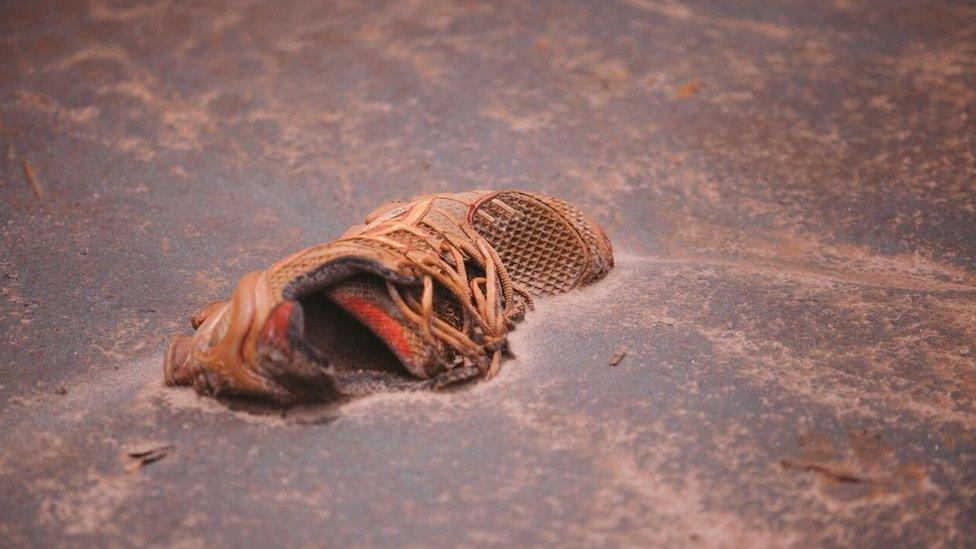In pictures: Brazil dam burst aftermath
- Published

On 5 November, the people of Bento Rodrigues in the south-eastern Brazilian state of Minas Gerais heard a deafening noise when the nearby Fundao dam holding waste water from iron ore mining collapsed.
In what is one of Brazil's biggest environmental disasters, about 62 million cubic metres of mud spilled from the dam and flooded a vast area.
At least 17 people were killed. Two are still missing.
The cause of the burst is still unclear but the Brazilian government has filed a lawsuit against Samarco, the joint venture between mining giants BHP Billiton and Vale, which owned the dam.
The area was closed off for four weeks while rescue workers and investigators searched the mud.
A month after the disaster, Brazilian journalist Nina Neves and photographer Ismael dos Anjos travelled to Bento Rodrigues and nearby Paracatu de Baixo to examine the damage caused.
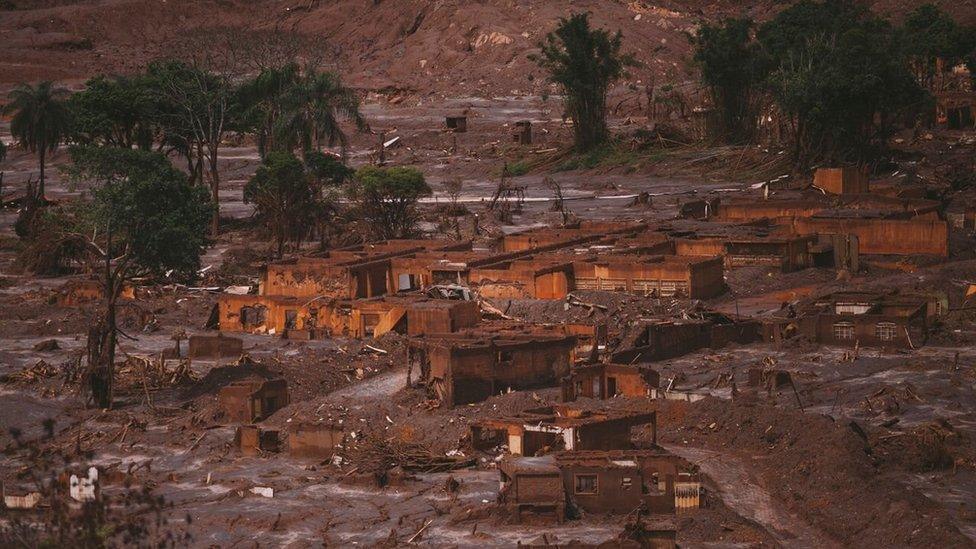
It was afternoon when Bento Rodrigues was swallowed by a river of mud.
The residents, who had had no warning of the impending disaster, could do little more than run for their lives.
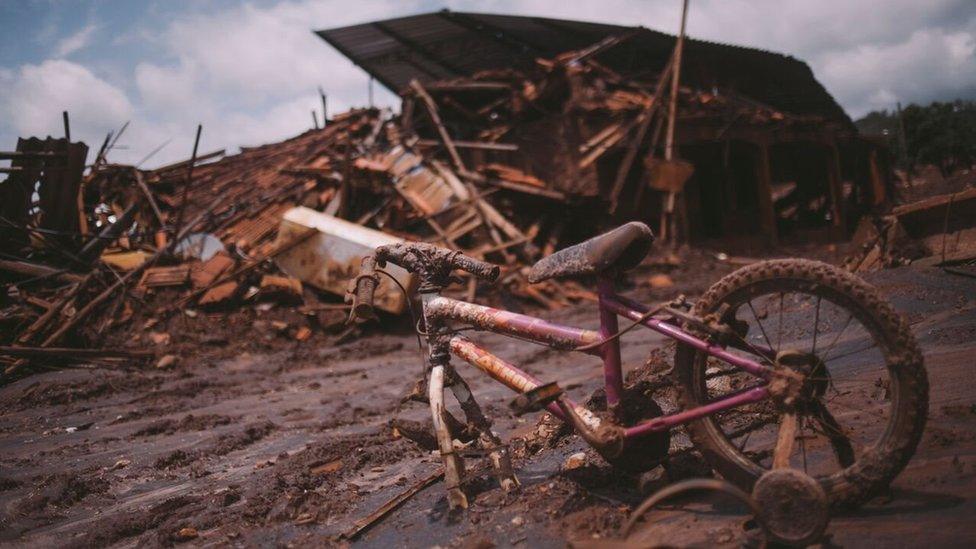

The force of the mud took everything in its path, bending metal and flattening homes.
The site has been abandoned since the mud flow hit.
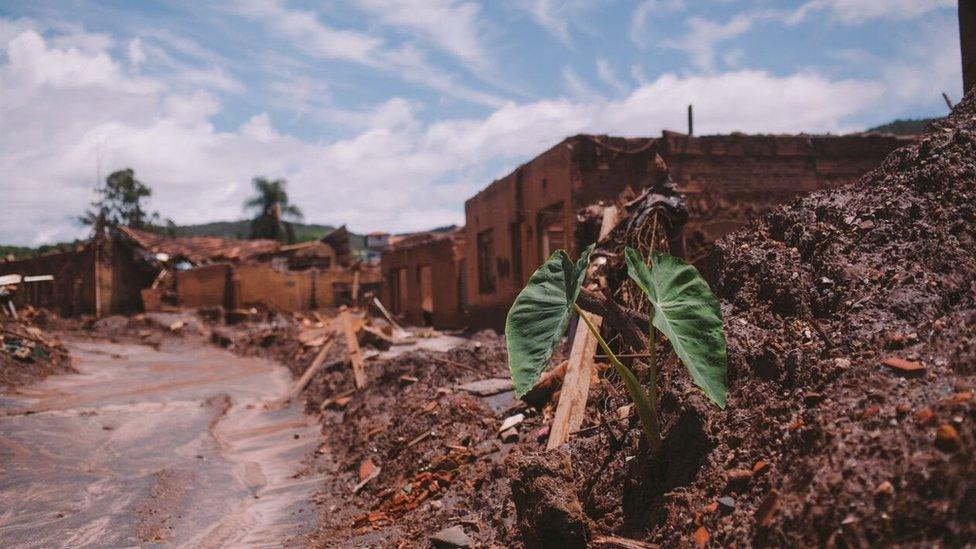
Children's toys and people's belongings are scattered throughout the village, a stark reminder of the lively village Bento Rodrigues once was.
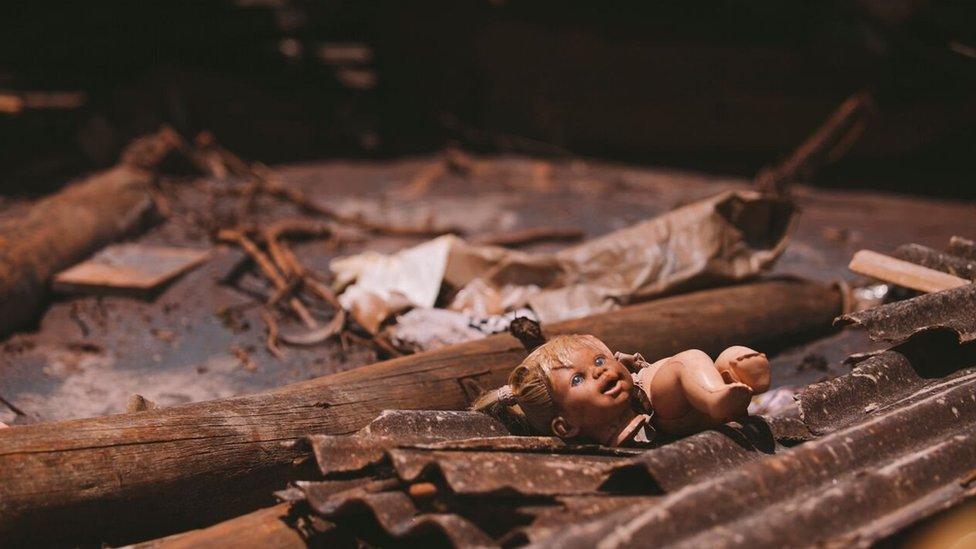

Some areas of Bento Rodrigues look like twister has torn through it, with metal rods and pieces of wood littering the ground.
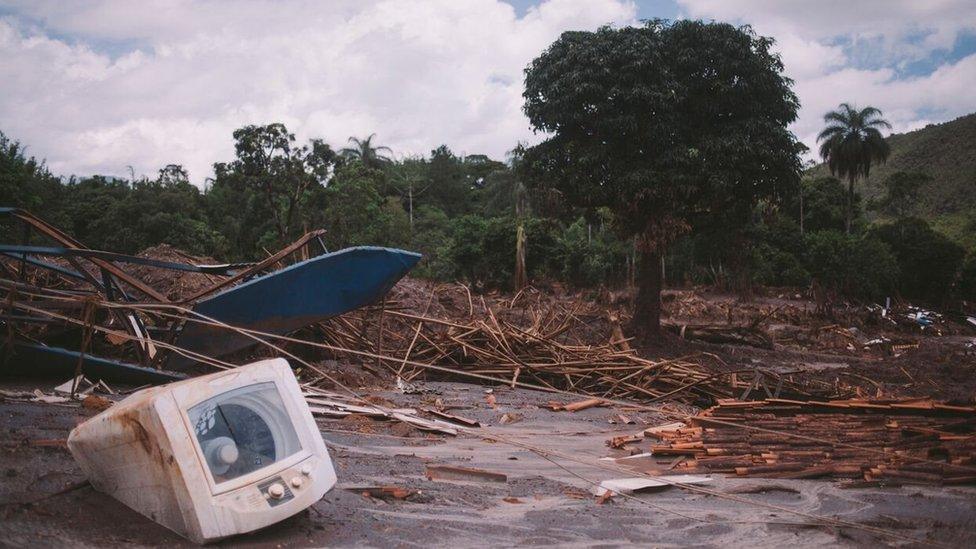
The force of the mud flow carried washing machines far from the homes where they once stood.
But some smaller items, such as these religious statuettes, survived the impact.
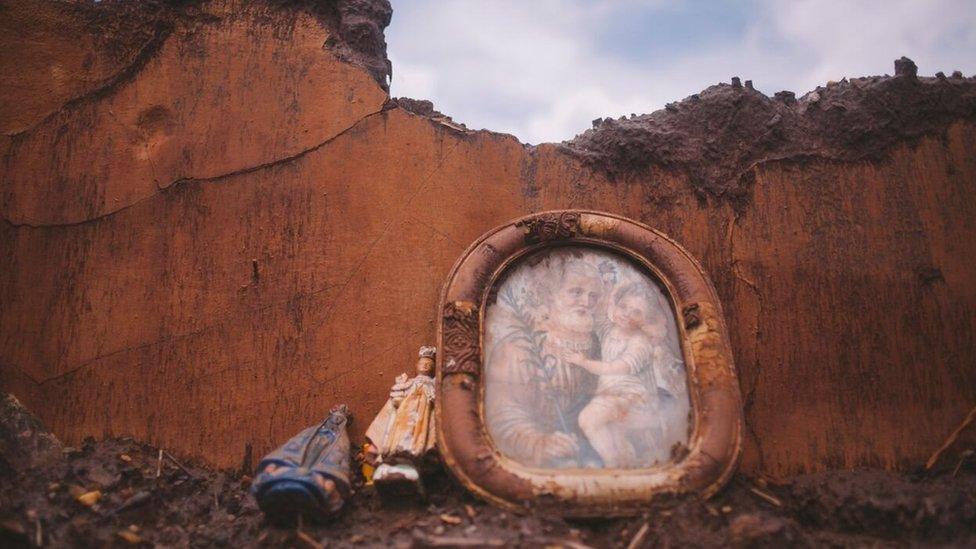
Behind the ruins of Bento Rodrigues's school, the swings are suspended in mud, giving a strange illusion of motion in the deserted village.
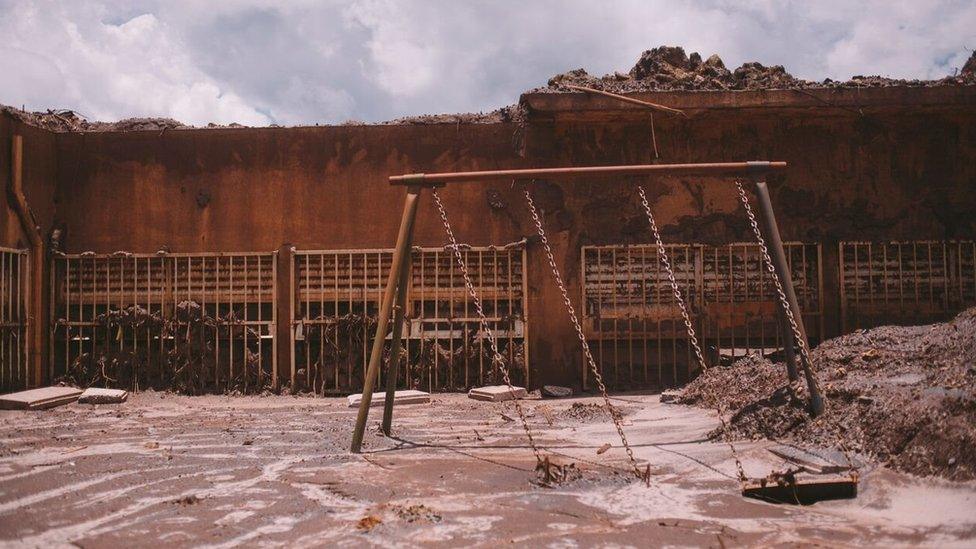
Paracatu de Baixo was the second village in the path of the mud flow.
Residents here were luckier than those of Bento Rodrigues as they received some warning of the disaster and could take refuge.
No-one died here, but a tree left standing bears the marks of the mud and shows the height it reached.
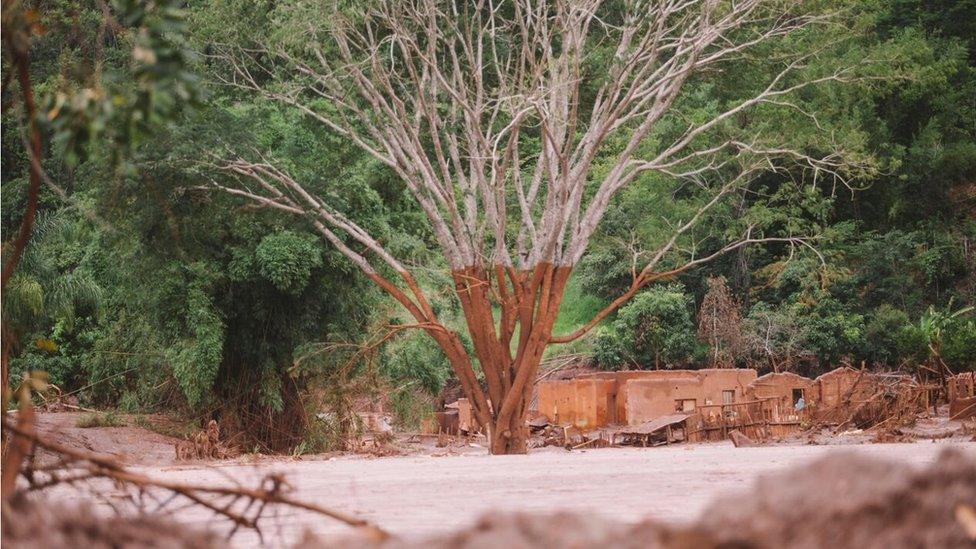
Some residents have been back to look for remains of their belongings in the rubble, but most found very little that was salvageable.
